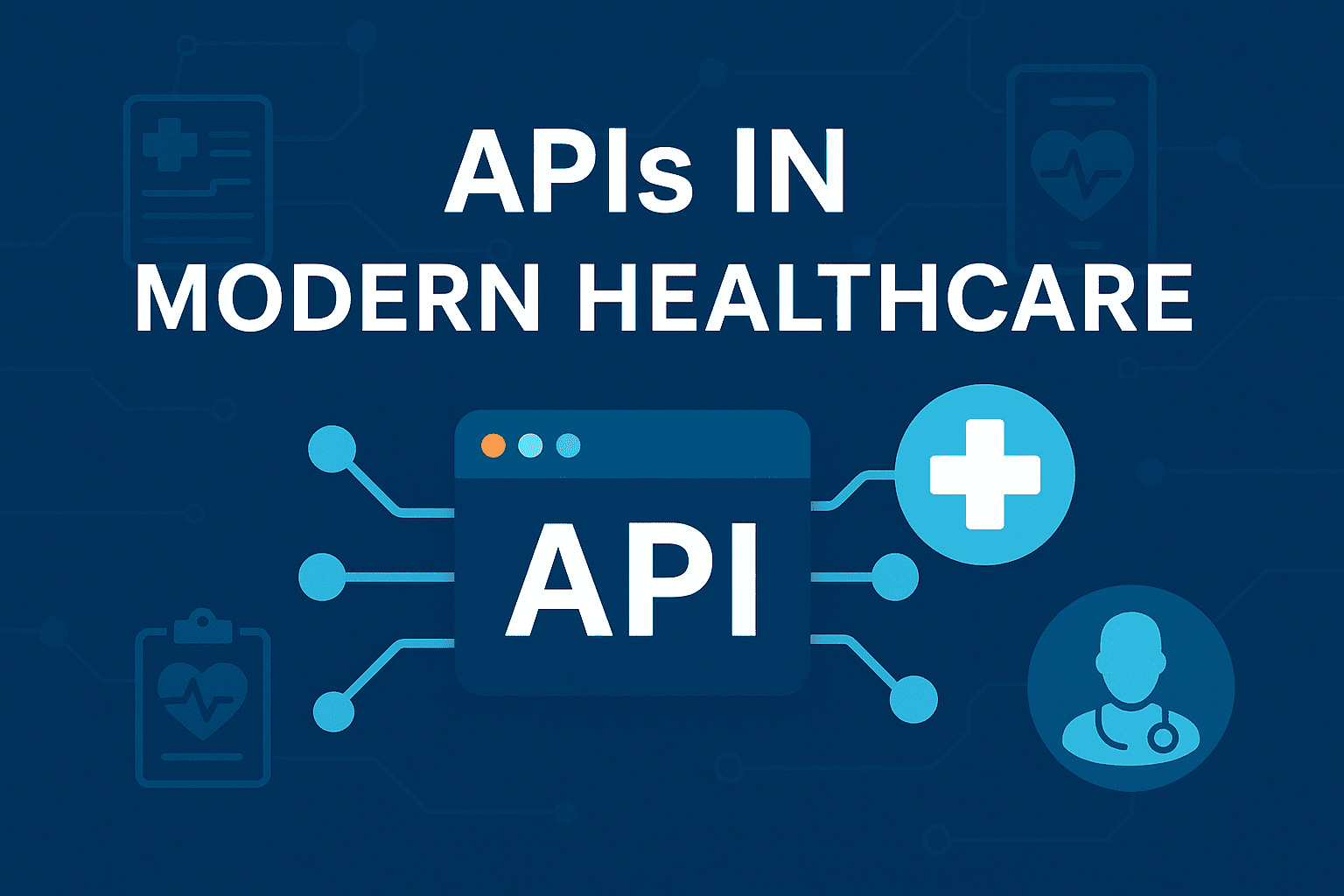Updated on: July 11, 2025
In today’s fast-evolving healthcare landscape, APIs (Application Programming Interfaces) are no longer just a buzzword—they’re a catalyst for digital transformation. From enabling interoperability to improving clinical workflows and patient engagement, APIs are reshaping how healthcare organizations deliver care, manage data, and meet regulatory demands.
In this article, we’ll explore what APIs mean in the context of modern healthcare, why they matter, and how they’re driving innovation, including in areas like virtual medical scribing.
👉 Discover how DocScrib uses AI-driven technology to streamline clinical documentation.
What Are APIs in Healthcare?
An API (Application Programming Interface) is a set of protocols and tools that allows different software applications to communicate with each other. In healthcare, APIs serve as the digital bridges connecting Electronic Health Records (EHRs), healthcare apps, telemedicine platforms, wearable devices, and more.
Without APIs, healthcare systems remain siloed, making it difficult to share crucial patient information in real time.
Why Are APIs Critical in Modern Healthcare?
Here are key reasons why APIs are transforming healthcare:
1. Interoperability and Seamless Data Exchange
Healthcare providers often use different EHR systems that don’t “talk” to each other. APIs enable secure data exchange between these systems, ensuring that clinicians have access to complete patient information, regardless of where care was provided.
👉 Example: FHIR (Fast Healthcare Interoperability Resources) APIs are increasingly used to standardize health data sharing.
2. Enhanced Patient Care and Experience
APIs power patient-facing applications—like patient portals, telehealth apps, and remote monitoring tools—that improve patient engagement and access to care.
3. Automation of Administrative Tasks
By connecting disparate systems, APIs automate routine tasks such as:
-
Appointment scheduling
-
Insurance verification
-
Billing and claims management
This allows healthcare staff to focus more on patient care and less on paperwork.
4. Real-Time Access to Data
APIs make it possible for clinicians to access real-time patient data from multiple sources, leading to faster, more informed decision-making.
Key Use Cases of APIs in Modern Healthcare
Let’s break down some practical applications of APIs that are making a real difference:
| Use Case | How APIs Help |
|---|---|
| Telemedicine Platforms | Enable video conferencing, secure messaging, and EHR integration for remote consultations. |
| Wearable Health Devices | Allow health data from smartwatches and fitness trackers to be shared directly with providers. |
| AI Medical Scribes | Automate clinical documentation and integrate notes directly into EHRs via APIs. |
| Pharmacy & Lab Systems Integration | Share prescription data and lab results instantly with care teams. |
| Patient Engagement Platforms | APIs enable mobile apps where patients can book appointments, view records, or message doctors. |
How APIs Power Virtual Medical Scribes like DocScrib
One of the most impactful areas where APIs are revolutionizing healthcare is in clinical documentation.
AI-Powered Virtual Medical Scribes
Tools like DocScrib leverage APIs to:
-
Automatically capture patient-physician conversations.
-
Generate structured, EHR-ready clinical notes.
-
Seamlessly integrate documentation into major EHR systems.
This reduces the burden of charting, cuts down on physician burnout, and allows more time for direct patient care.
Curious how DocScrib can help? Schedule a demo here.
The Rise of Open APIs and FHIR in Healthcare
Healthcare regulators and policymakers are now pushing for open APIs based on FHIR standards, as seen in:
-
21st Century Cures Act (U.S.)
-
ONC Interoperability Rules
This shift ensures that patients can access their health data securely while allowing third-party developers to build innovative solutions on top of existing healthcare infrastructure.
Challenges to API Adoption in Healthcare
While the benefits are clear, the journey toward widespread API adoption faces several roadblocks:
-
Data Privacy and HIPAA Compliance: Ensuring secure, encrypted data exchange.
-
System Compatibility: Legacy systems often lack modern API capabilities.
-
Cost and Complexity: Developing and maintaining APIs requires investment.
-
Vendor Lock-In: Proprietary systems can limit interoperability.
Overcoming these challenges requires collaboration between healthcare providers, IT vendors, and regulators.
The Future of APIs in Healthcare
The future of APIs in healthcare points toward:
✅ Hyper-connected ecosystems where wearables, telehealth, EHRs, and AI scribes work seamlessly together.
✅ Predictive analytics and AI integration using real-time data.
✅ Patient-centric care with patients controlling and accessing their own health records.
Healthcare APIs will continue to play a central role in digital health transformation—from streamlined documentation with solutions like DocScrib to personalized treatment plans powered by AI.
Key Takeaways
✅ APIs are the backbone of modern healthcare digital transformation.
✅ They enable interoperability, automation, and real-time data access.
✅ Solutions like DocScrib harness APIs to improve clinical documentation and reduce provider burnout.
✅ While challenges exist, the momentum toward open, secure, and patient-centered API ecosystems is unstoppable.
👉 Ready to simplify your documentation and focus more on patient care?
Book a personalized demo with DocScrib today and experience the future of clinical documentation.
